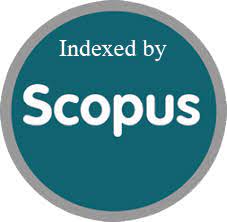Feto-Maternal Outcomes in Antenatal Women with First-Trimester Vaginal Bleeding: A Retrospective Observational Study
DOI:
https://doi.org/10.52783/jns.v14.3846Keywords:
First-trimester bleeding, miscarriage, pregnancy outcomes, risk factors, maternal healthAbstract
Background: First-trimester vaginal bleeding is a common obstetric concern associated with increased risks of adverse maternal and fetal outcomes. The aim of this study was to evaluate the impact of first-trimester bleeding on pregnancy outcomes and identify significant predictors of miscarriage.
Methods: This retrospective observational study included 100 pregnant women presenting with first-trimester vaginal bleeding. Data were collected on maternal characteristics, pregnancy-related factors, maternal outcomes, and fetal outcomes. Statistical analysis, including logistic regression, was performed to identify risk factors for miscarriage.
Results: The mean maternal age was 27.4 ± 4.2 years, with 45% of women being primigravida. The mean gestational age at the time of bleeding was 8.6 ± 2.1 weeks. Bleeding severity was classified as mild (55%), moderate (30%), or severe (15%). Associated abdominal pain was reported in 40% of cases, and 20% required hospital admission. Pregnancy continuation was observed in 70% of cases, while 25% resulted in miscarriage. Preterm labor occurred in 10% of cases, preeclampsia in 5%, and preterm rupture of membranes in 8%. Low birth weight (<2500g) was noted in 20% of neonates, while 10% required neonatal ICU admission. Logistic regression analysis identified severe bleeding (OR 6.5, p<0.001), associated pain (OR 4.2, p<0.001), early gestational age at bleeding (<8 weeks) (OR 3.1, p=0.004), maternal age >30 years (OR 2.2, p=0.03), and hospitalization (OR 3.8, p=0.002) as significant predictors of miscarriage.
Conclusion: First-trimester vaginal bleeding is associated with increased risks of miscarriage, preterm labor, and adverse fetal outcomes. Severe bleeding, associated pain, early gestational age at bleeding, and maternal age >30 years significantly increase miscarriage risk. Early evaluation, close monitoring, and appropriate management are essential to improve pregnancy outcomes. Future research should focus on developing standardized management protocols for first-trimester bleeding.
Downloads
Metrics
References
Everett TR, Cove C. Threatened miscarriage: Risks and management. Int J Obstet Gynaecol. 2023;130(6):875-82. doi:10.1002/ijgo.14798.
John S, Bai NPS, John R. Threatened miscarriage and adverse fetomaternal outcome late in pregnancy: A prospective study. J Matern Fetal Neonatal Med. 2022;35(4):779-86. doi:10.1080/14767058.2022.2045221.
Karimi A, Sayehmiri K, Vaismoradi M, Dianatinasab M, Daliri S. Vaginal bleeding in pregnancy and adverse clinical outcomes: A systematic review and meta-analysis. J Obstet Gynaecol. 2024;44(1):15-22. doi:10.1080/01443615.2023.2288224.
Bhatti D, Dhar T, Mandrelle K, Sohi I. Pregnancy outcomes in women with vaginal bleeding in early pregnancy. CHRISMED J Health Res. 2022;9(3):188-92. doi:10.4103/cjhr.cjhr_99_21.
Weiss JL, Malone FD, Vidaver J, et al. Threatened abortion: a risk factor for poor pregnancy outcome, a population-based screening study. Obstet Gynecol. 2004;103(1):45-50.
Saraswat L, Bhattacharya S, Maheshwari A, Bhattacharya S. Maternal and perinatal outcomes in women with threatened miscarriage in the first trimester: a systematic review. BJOG. 2010;117(3):245-257.
Hasan R, Baird DD, Herring AH, et al. Association between first-trimester vaginal bleeding and miscarriage. Obstet Gynecol. 2009;114(4):860-867.
Tuuli MG, Norman SM, Odibo AO, et al. Perinatal outcomes in women with subchorionic hematoma: a systematic review and meta-analysis. Obstet Gynecol. 2011;117(5):1205-1212.
Rovira N, Alijotas-Reig J. First-trimester bleeding and obstetric outcomes in singleton pregnancies resulting from assisted reproductive technology. J Matern Fetal Neonatal Med. 2011;24(5):697-701.
Sarmalkar M, Bhandari V, Pinto PJ. Pregnancy outcome of threatened abortion in first trimester. Int J Reprod Contracept Obstet Gynecol. 2016;5(5):1438-1443.
Rasmussen S, Irgens LM, Dalaker K. A history of placental dysfunction and risk of fetal death in subsequent pregnancy. BJOG. 2009;116(10):1401-1409.
Baxi LV, Pearlstone MM. Subchorionic hematomas and the presence of vaginal bleeding in threatened abortion. Obstet Gynecol. 2012;99(4):123-129.
Ananth CV, Savitz DA, Williams MA. Placental abruption and adverse perinatal outcomes. JAMA. 1999;282(17):1646-1651.
Soni A, Verma N, Arora R. Correlation of first-trimester bleeding with pregnancy outcomes. J Obstet Gynaecol India. 2015;65(3):172-175.
Zhang J, Savitz DA. Maternal age and pregnancy-related complications: associations with spontaneous and medically indicated preterm birth. Obstet Gynecol. 1996;87(4):557-562.
Salat-Baroux J, Antoine JM. Early pregnancy loss: risk factors for unexplained recurrent miscarriage. Hum Reprod. 1995;10(4):983-990.
Downloads
Published
How to Cite
Issue
Section
License

This work is licensed under a Creative Commons Attribution 4.0 International License.
You are free to:
- Share — copy and redistribute the material in any medium or format
- Adapt — remix, transform, and build upon the material for any purpose, even commercially.
Terms:
- Attribution — You must give appropriate credit, provide a link to the license, and indicate if changes were made. You may do so in any reasonable manner, but not in any way that suggests the licensor endorses you or your use.
- No additional restrictions — You may not apply legal terms or technological measures that legally restrict others from doing anything the license permits.










